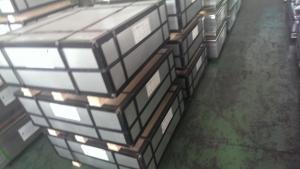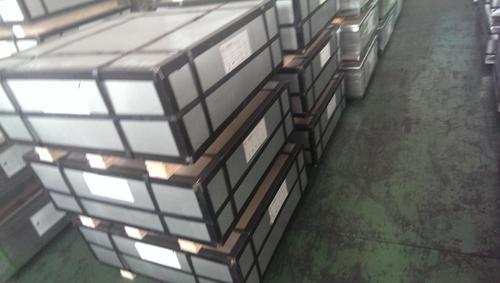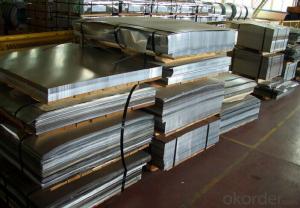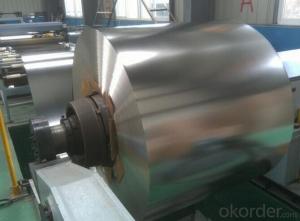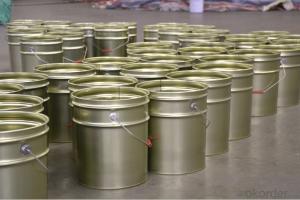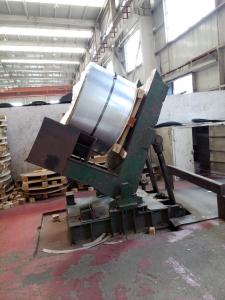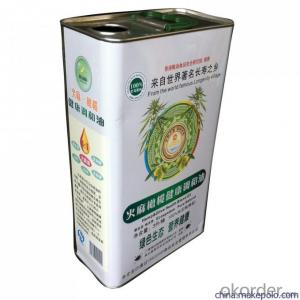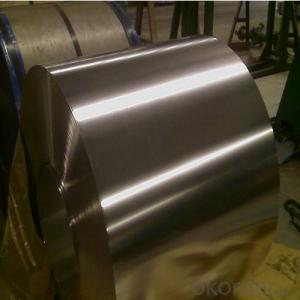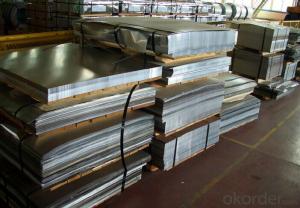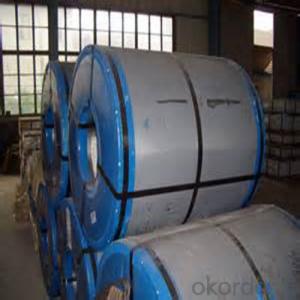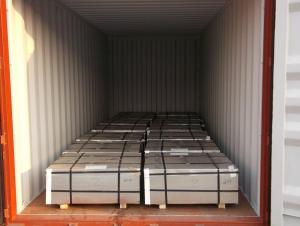Electrolytic Tinplate of Good Quality
- Loading Port:
- China Main Port
- Payment Terms:
- TT OR LC
- Min Order Qty:
- -
- Supply Capability:
- -
OKorder Service Pledge
Quality Product, Order Online Tracking, Timely Delivery
OKorder Financial Service
Credit Rating, Credit Services, Credit Purchasing
You Might Also Like
Standard | JIS G3003,BS EN 10202 |
| Material | MR, SPCC |
Thickness | 0.15-0.50mm |
| Width | 600-1050mm |
| Temper | T1-T5; DR8 |
| Coating | Both Equal and Differential Available |
Surface finish | Bright, Stone, Silver, Matt |
| Oiling | DOS |
| Coil ID | 508 mm |
| Coil weight | 3-10 MT |
| Sheet weight | 1-1.5 MT |
| Weight in one 20’ container | 20-25 MT |
| Packaging | For coils: Anti-rust paper +metal cover +corner protected +wood skid For sheets: Thin plastic film +rust-proof paper +metal cover +metal angles + straps + pallet. Loaded in 20 feet container with max weight 25 tons |
| Application | Metal Container and Mechanical Parts |
- Q: How does tinplate contribute to the conductivity of electrical components?
- Tinplate contributes to the conductivity of electrical components by acting as a protective coating, preventing corrosion and oxidation of the underlying metal. This ensures a consistent flow of electrical current and enhances the overall conductivity of the component.
- Q: Tinplate also known as what? What is the density of it?
- Tinplate, also known as tin plated iron, is the common name for tin plated steel sheet. The English abbreviation is SPTE. It is a cold-rolled low carbon steel sheet or strip coated with commercially pure tin on both sides. The density is 7.85.Tinplate is a tin covered with tin, it is not easy to rust, also known as tin iron.
- Q: How can tinplate be customized for branding purposes?
- Tinplate can be customized for branding purposes through various methods such as printing, embossing, and labeling. The use of high-quality printing techniques allows for intricate designs, logos, and product information to be directly printed on the tinplate surface. Embossing techniques can add a three-dimensional effect to the branding, making it visually appealing and unique. Additionally, labels can be affixed to the tinplate, providing flexibility in changing branding elements or promoting different product lines. These customization options help businesses effectively market their brand and enhance their product's visibility on store shelves.
- Q: How is tinplate recycled?
- Tinplate is recycled by first collecting it from various sources, such as food cans or packaging materials. The collected tinplate is then sorted and separated from other materials like paper or plastic through a magnetic separation process. After this, the tinplate is shredded into small pieces and further sorted to remove any remaining impurities. The clean tinplate pieces are then melted in a furnace to separate the tin coating from the steel base. The separated tin and steel are both recycled separately, with the tin used for various purposes like coating new tinplate or producing solder, while the steel is reused for manufacturing other steel products. Overall, the recycling process of tinplate helps conserve resources, reduces waste, and promotes environmental sustainability.
- Q: What type of paint is suitable for tinplate?
- Enamel paint is suitable for tinplate due to its durability and ability to adhere to metal surfaces.
- Q: Can tinplate be used for packaging of organic products?
- Yes, tinplate can be used for packaging of organic products. Tinplate is a type of steel coated with a thin layer of tin, providing excellent protection against corrosion and ensuring food safety. It is widely used in the packaging industry, including for organic products, as it is considered a safe and sustainable packaging material.
- Q: How does tinplate contribute to the overall aesthetics of packaging?
- Tinplate contributes to the overall aesthetics of packaging through its unique and eye-catching appearance. Its shiny and smooth surface, along with its ability to be printed with vibrant and intricate designs, adds a touch of elegance and sophistication to various products. Additionally, tinplate's durability and versatility allow for the creation of intricate shapes and designs, enhancing the overall visual appeal of packaging.
- Q: What are the common testing methods for tinplate?
- Common testing methods for tinplate include visual inspection, thickness measurement, hardness testing, adhesion testing, corrosion resistance testing, and coating weight measurement.
- Q: What are the different types of tinplate coatings available?
- There are several types of tinplate coatings available, including electrolytic tinplate (ETP), tin-free steel (TFS), and black plate. ETP is the most commonly used and consists of a thin layer of tin on both sides of the steel substrate. TFS, on the other hand, does not have a tin coating but is instead coated with a layer of chromium or chromium oxide. Black plate refers to steel that has not been coated with any protective layer and is typically used for industrial applications.
- Q: What are the advantages of using tinplate for beverage cans?
- There are several advantages of using tinplate for beverage cans. Firstly, tinplate provides excellent protection against corrosion, ensuring the integrity of the product inside. Secondly, tinplate cans are lightweight and durable, making them easy to transport and handle. Additionally, tinplate is easily recyclable, making it an environmentally friendly choice. Lastly, tinplate cans offer a high-quality printing surface, allowing for attractive designs and branding opportunities.
Send your message to us
Electrolytic Tinplate of Good Quality
- Loading Port:
- China Main Port
- Payment Terms:
- TT OR LC
- Min Order Qty:
- -
- Supply Capability:
- -
OKorder Service Pledge
Quality Product, Order Online Tracking, Timely Delivery
OKorder Financial Service
Credit Rating, Credit Services, Credit Purchasing
Similar products
Hot products
Hot Searches
Related keywords
